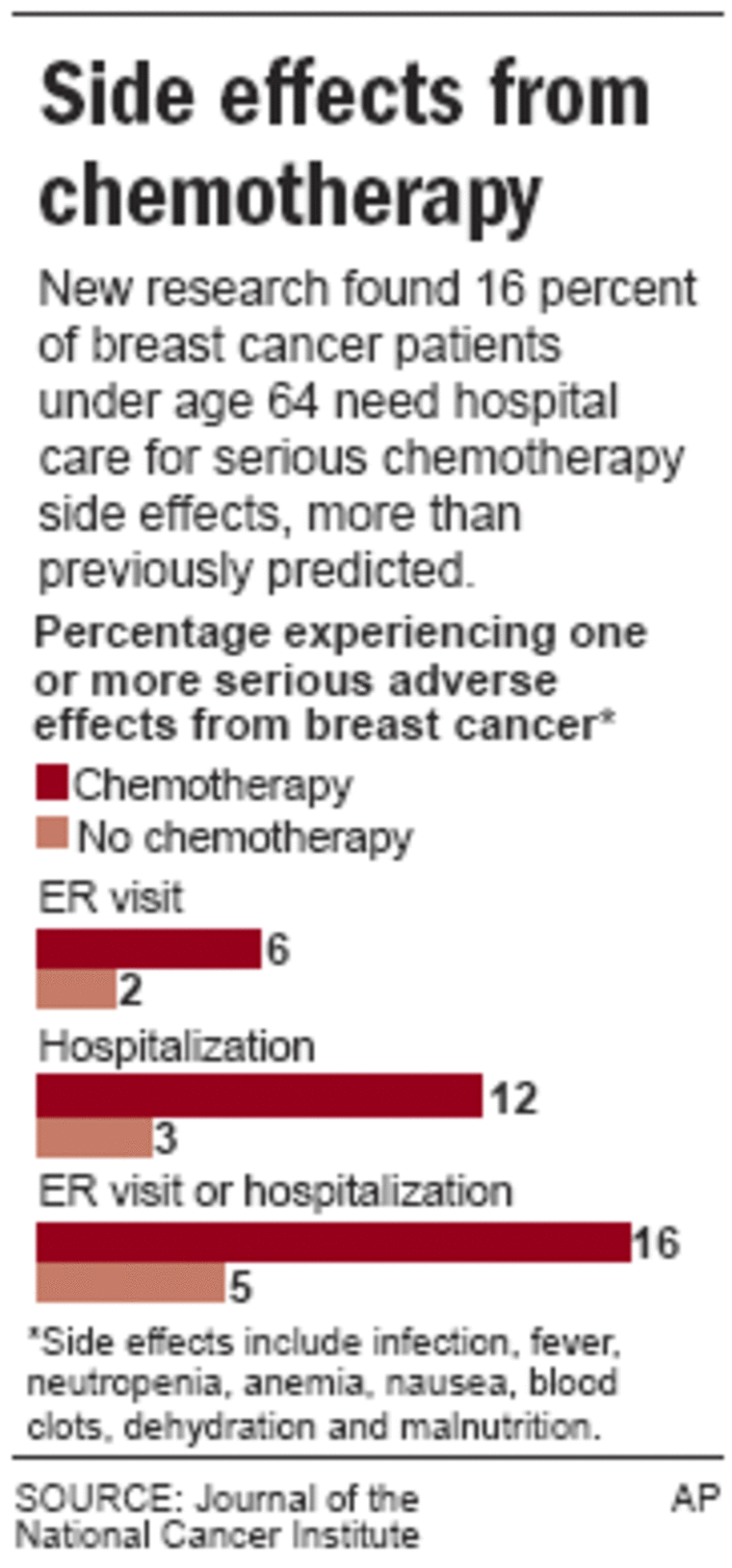Breast cancer patients seem to suffer more serious side effects from chemotherapy than previously thought.
Roughly one in six of such women wind up at the emergency room or hospitalized because of such side effects as infection, low blood counts, dehydration or nausea, researchers reported Tuesday.
Some of the side effects occurred at rates three to four times higher than earlier research had predicted.
Tuesday's study marks the first attempt to assess the real-world risks of chemotherapy for some 35,000 breast cancer patients under age 64 who get the drugs each year.
Most side-effect information comes from clinical trials of medications that can underestimate toxicity. Those trials are designed to prove if the drugs fight cancer and therefore should be sold, and they tend to enroll only the best candidates instead of women who might be particularly sensitive to side effects.
Adding to that conundrum: Many breast cancer patients don't need chemotherapy in the first place; surgery, radiation and hormone treatment are enough. But doctors don't always have an easy way to tell who would benefit from chemo on top of all that.
And for women in the to-treat-or-not gray zone, age sometimes is the deciding factor —because those under 64 are thought to tolerate chemotherapy better than older women.
"We don't believe our study is saying that chemotherapy is not helpful," stressed Dr. Michael Hassett of Boston's Dana-Farber Cancer Institute, who led the research, published in Tuesday's Journal of the National Cancer Institute.
But, "we've been struggling as a professional community to understand which women benefit from chemotherapy," he added.
If a woman knows how often she is likely to be admitted to the hospital, it may help her decide whether to gamble on the drugs or skip them, he explained.
Hassett and colleagues culled a massive database of insurance claims to study how often breast cancer patients under 64 wound up at the hospital in the year after diagnosis, and how often some leading chemotherapy side effects were blamed.

A total of 16 percent of chemo recipients received either emergency room care or hospitalization for those side effects. Most common: infection and fever, afflicting 8 percent of the patients. That's not a high number — but it is four times what previous clinical trials had predicted, the researchers reported.
Moreover, 61 percent of the chemo recipients had an ER visit or hospitalization for some reason — not just a chemotherapy-related side effect — compared with 42 percent of breast cancer patients not on the drugs. The study couldn't explain the difference.
"The study highlights the importance of studying how drugs affect people in everyday medical care" so they can "make informed decisions about the risks and benefits of their treatment options," said Dr. Carolyn Clancy, director of the U.S. Agency for Healthcare Research and Quality, which funded the work.
Better understanding of the risks is especially important for those patients who choose chemo despite a good prognosis, when it may increase their chances of survival by less than 5 percent, Dr. Joseph Lau of the Tufts-New England Medical Center wrote in an accompanying editorial.
The extra care of course meant extra medical bills. Hassett estimated that serious chemo side effects could cost health plans up to $45 million a year.